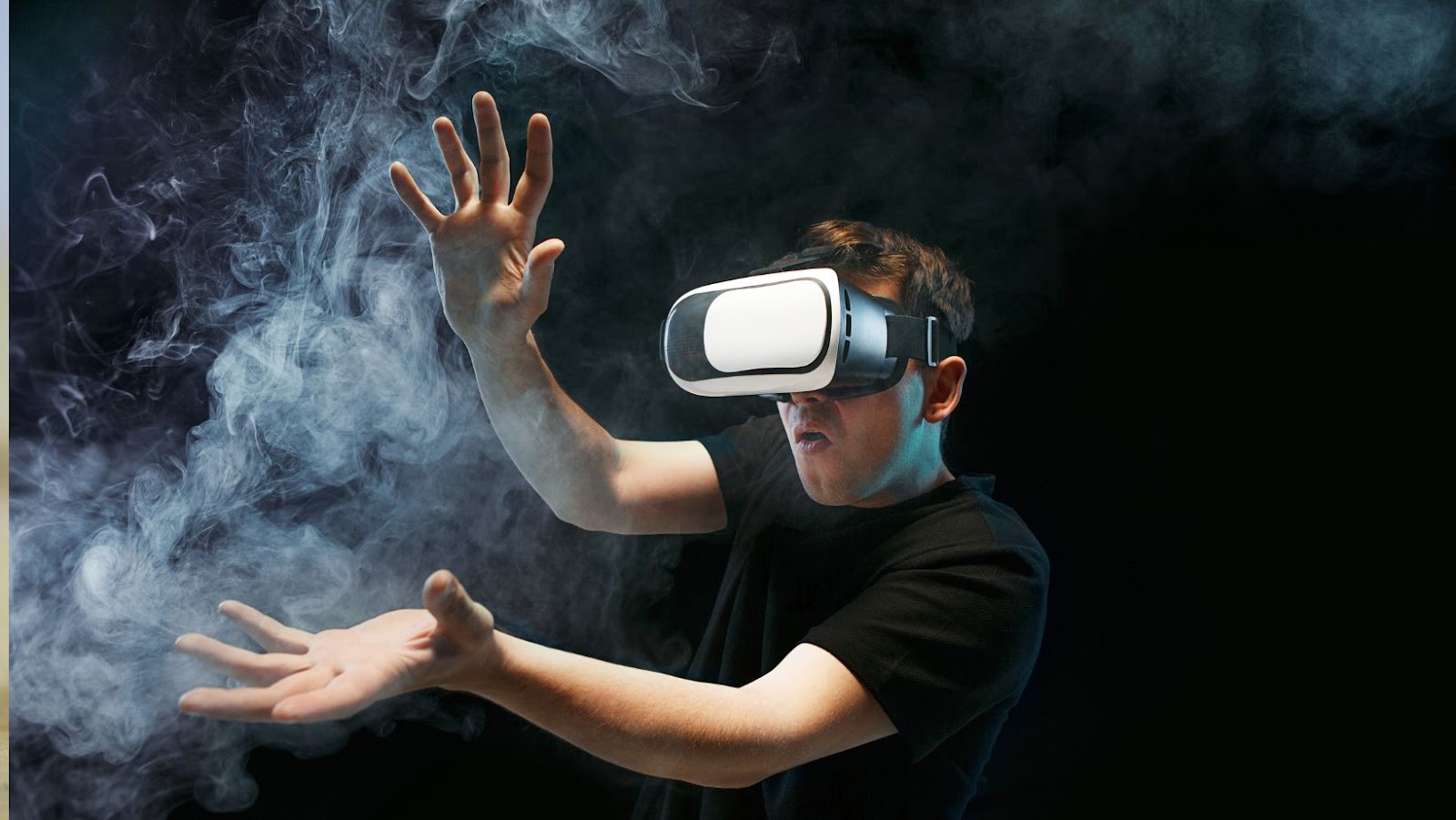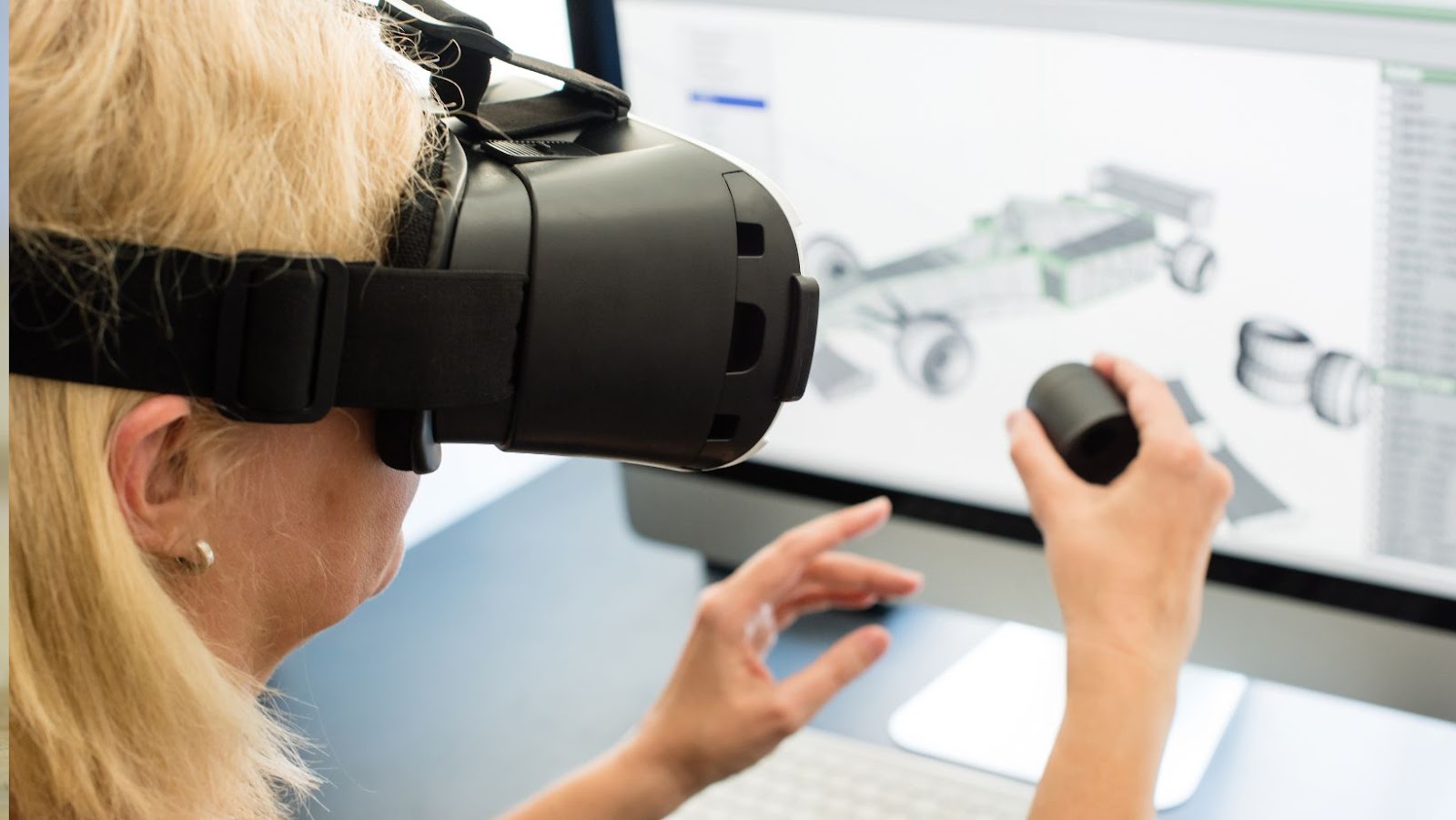 VR Cool Accessories
VR Cool Accessories
Haptic gloves and custom controllers go together like a hand in glove – pun intended. The integration of haptic feedback with custom controllers allows for individual finger tracking (for instance, Valve’s Index Controllers), adjusting the digital world’s tactile sensations. Users don’t grab and clutch air; they engage with software-programmed objects, feeling the shape, texture, and resistance.
Omnidirectional treadmills reflect the zenith of VR locomotion peripherals. Brands like Virtuix Omni and Infinadeck offer these foot-controlled devices that allow users unlimited and unrestricted motion in VR, replacing joystick navigations. The design emulates real walking, sprinting, and backtracking experiences. It’s, therefore, essential for users desiring a truly immersive virtual exploration.
The role of cool accessories in a VR setup goes far beyond aesthetics. They transform virtual environments into tactile domains. Movements aren’t confined to thumbs operating the joystick but involve entire limbs, fingers, and palms. For instance, accessories like the 3dRudder foot motion controller and the bHaptics TactSuit X40 vest provide spatial awareness and haptic feedback across the body. These enhancements offer users an unparalleled, physically immersive VR experience.
The future of VR accessories looks promising and rapidly evolving. Consider eye-tracking technology embedded within headsets or brain-computer interfaces (BCI) like NextMind’s Dev Kit. These innovate and push the boundaries of immersive virtual exploration. Without question, VR accessories have moved beyond novelty and are shaping the landscape of virtual interaction and games. It’s indeed an exciting time for both gamers and tech enthusiasts immersed in the VR realm.
 What Are VR Accessories
What Are VR Accessories
VR Accessories represent a class of items that work harmoniously with VR headsets, honing the immersive virtual reality experience. They range from haptic gloves, foot controllers, to omnidirectional treadmills, each designed to serve a unique function and contribute to a rich VR experience.
The relevance of VR accessories in the VR eco-system can’t be overstated. First, VR accessories emulate the physical world in the virtual space, making VR more relatable and realistic. They leverage haptic feedback, motion tracking, and additional sensory components to simulate elements of the physical world. For instance, haptic gloves enable users to “touch” VR objects, which enhances immersion significantly. Second, they also broaden the realm of possibilities in VR. Accessories such as omnidirectional treadmills allow users to explore vast virtual landscapes with natural motion, an unheard-of concept just years ago. Lastly, VR accessories hold potential for applications beyond entertainment. They offer an avenue for more intuitive interaction in fields such as medical training, architectural design and virtual tourism.
Substantially, VR Accessories intensify the immersion in virtual reality. They give a multi-sensory engagement, which is crucial to the believability of the virtual world. For instance, the bHaptics TactSuit X40 vest allows users to feel directional haptic feedback, cultivating a captivating gaming environment, feeling the impact from virtual enemies or the palpable pulse of an artificial heart. Additionally, custom VR controllers and foot motion platforms like 3dRudder provide nuanced manipulation in the virtual world.
 Most Popular VR Cool Accessories
Most Popular VR Cool Accessories
Delving into the realm of popular VR accessories, this section explores high-ranking gadgets transforming virtual engagements. From advanced controllers to immersive headsets and precise sensors, these accessories redefine the VR experience.
Consider VR Controllers as a transformative tool for digital interaction, providing advanced tactile feedback and individual finger tracking. Whether it’s the Valve Index Controllers, known for their naturalistic hand gestures capturing, or Oculus Touch controllers that deliver immersive haptic feedback, controllers contribute significantly to enhancing VR encounters. To exemplify, playing a virtual piano or mimicking sign language becomes achievable thanks to controllers’ precision and advanced tracking capabilities.
VR Headsets form the foundation of VR endeavors, incorporating cutting-edge technology to simulate life-like visuals. Pioneering models like Oculus Rift and HTC Vive Pro aren’t just popular, they’re redefining VR gaming with increased viewing angles and resolution. Improving immersion, headsets like the PlayStation VR showcase intricate virtual worlds effortlessly, bringing gamers closer to the reality of their virtual experiences. For instance, exploring a virtual jungle or traversing a digital castle become intensely realistic experiences with these state-of-the-art headsets.
VR Sensors, such as those used in the Oculus Quest or HTC Vive, play a crucial role in creating fluid, realistic movements in the VR world. By accurately capturing physical movements and translating them into the VR environment, sensors remove restrictions on players’ mobility. High-performing sensors like the Lighthouse base stations used in Steam VR allow for whole room tracking, leading to more engaging gameplay. For example, the ability to duck behind virtual cover or to leap over digital obstacles is made impressively seamless with these precise sensor systems.